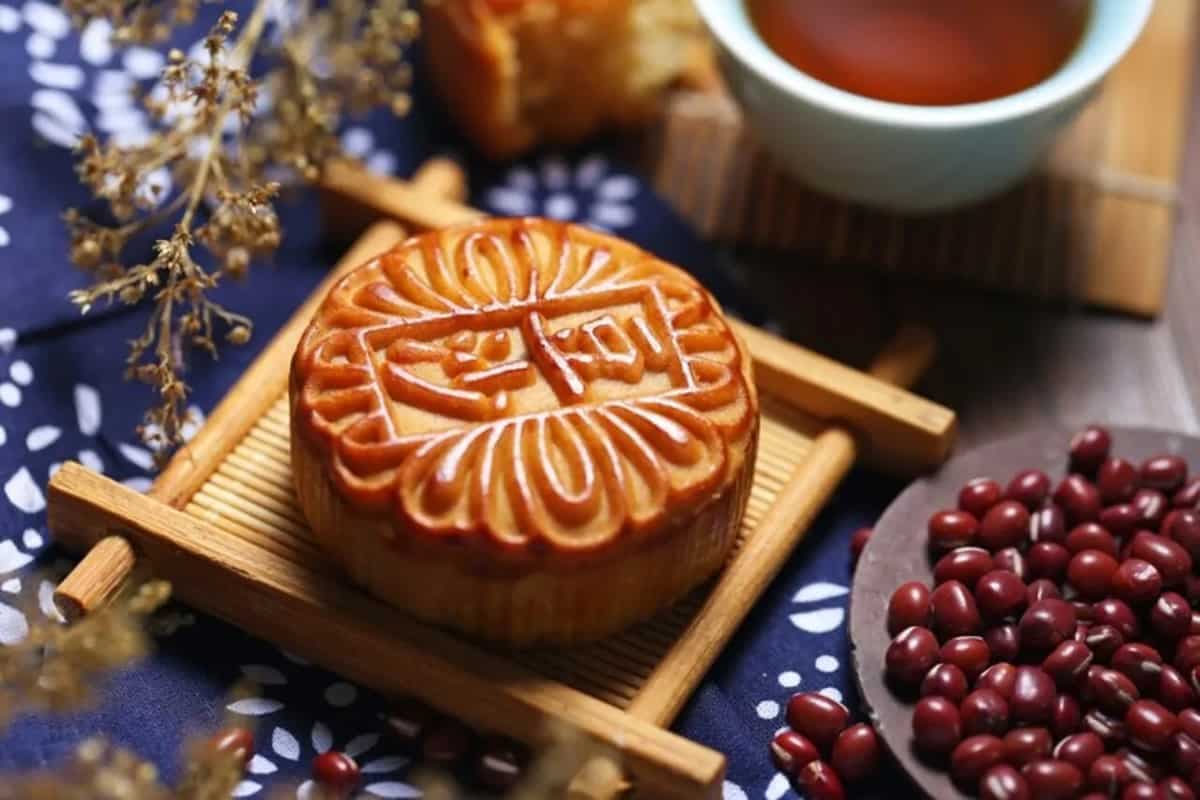Imagine biting into a sweet, delightful treasure that is exquisitely crafted and holds years of tradition and tales within. Not only a sophisticated dessert, this is the world-famous mooncake—a representation of harmony, a mythology, and a must-have treat for the Mid-Autumn Festival.
Numerous individuals worldwide have a unique place in their hearts and palates for mooncakes. These delicious pastries have an interesting and lengthy history that goes back many centuries.
Mooncakes are a famous food throughout the holiday season, having originated in ancient China and gained appeal in contemporary celebrations.
What Is A Mooncake?
Mooncakes are baked pastries shaped like a full moon (some might be square-shaped), with contents that can be sweet or savoury. They should not be confused with "moon pies."
The savoury fillings include ham, Chinese sausage or roast pork and radish; sweet fillings include sweet bean paste or lotus seed paste wrapped around a salted duck egg yolk (the most popular). Dried fruit and mixed nuts make up another classic filling. The fillings are encased in a dough layer, adorned with exquisite and detailed patterns that expose the contents, and cooked until they turn golden brown. Genuinely artistic creations.
What Is The Mid-Autumn Festival?
Every year on the fifteenth day of the eighth month of the Chinese lunisolar calendar, which falls on the Harvest Moon, the Chinese diaspora worldwide celebrates the Mid-Autumn Festival (zhōngqiūjié, 中秋節). The Harvest Moon Festival is another name for the Mid-Autumn Festival because of this. It is one of the four major Chinese holidays, along with Winter Harvest (Winter Solstice Festival), Chinese New Year (Spring Festival), and Chinese All Souls' Day (Qingming Festival). Chinese families commemorate this day with reunion dinners, lantern lighting, and—most importantly—eating mooncakes. Other civilizations from the Sinosphere also observe this holiday.
The History Of Mooncakes
Mooncakes have ancient roots in China that date back more than 3,000 years. Even while the precise origin is still up for question and covered in folklore, historical accounts provide us intriguing insights into this festive treat's illustrious past. According to a well-known hypothesis, mooncakes originated from a cake known as Taishi that was made in the Shang and Zhou Dynasties.
Rumour has it that mooncakes were intimately related to the Mid-Autumn Festival during the Tang Dynasty (618-907 CE). The Tang Dynasty concubine Yang Yuhuan of Emperor Xuanzong's court is reported to have called these circular pastries "mooncakes." These cakes' round form represented the full moon, which is a key component of the festivities surrounding the Mid-Autumn Festival.
People used to think that exchanging and consuming mooncakes with one another at the Mid-Autumn Festival would bring good fortune and a family reunion, even if the families were separated by great distances. This custom highlights the meaning of mooncakes as a symbol of harmony and love.
Mooncakes have symbolic meanings and a delectable flavour, but they have also had historical significance. Mooncakes were used in a major covert operation in the late Yuan Dynasty (1271–1368) to facilitate communication among rebels preparing an attack on Mongol power. These delicious pastries concealed signals that allowed important information to be transmitted covertly.

Mooncakes Today
Even in current times, mooncakes are still very important during the Mid-Autumn Festival, which is widely celebrated in East and Southeast Asian cultures, including Chinese culture. This celebration is a time for families to get together, express thanks, and pray for happiness and prosperity in addition to signalling the end of the fall harvest. Mooncake gifting has been a generation-to-generation custom that represents harmony, togetherness, and the rebirth of connections.
Traditionally, a rich filling is enclosed in a flaky pastry crust while making mooncakes. Although lotus seed paste and salted duck egg yolks are still common options, more contemporary varieties have appeared to accommodate changing tastes and inclinations.
Unique flavours have entered the mooncake scene, including black truffle, strawberry cream cheese with cookie crumble, durian snow skin with custard and salted egg cream. The inventiveness of the culinary community is boundless when it comes to redefining the conventional mooncake.


